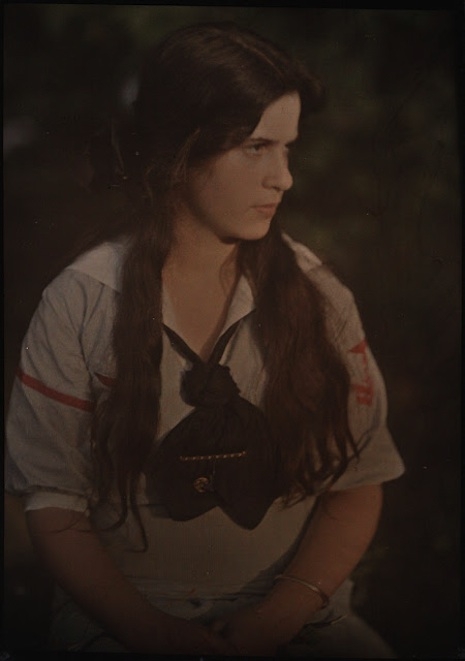
Photographer Alfred Stieglitz (1864–1946) has been described as “perhaps the most important figure in the history of visual arts in America.” During his fifty year career, Stieglitz produced some 2,500 mounted photographs, of which 1,642 are held by the National Gallery in Washington, DC as significant works of art.
Stieglitz said photography allowed him to “see straight,” a passion through which he divined “a reality so subtle that it becomes more real than reality.”
Born in Hoboken, New Jersey, in 1864, Stieglitz was the son of German-Jewish emigrants. His father was a highly successful businessman, who eventually sold his company for a vast profit in 1881 and moved his family back to Germany. Alfred enrolled in school before deciding to study engineering at the Technische Hochschule in Berlin. During his time at the technical college, Alfred bought his first camera and started taking photographs. When his parents returned to America in 1884, he opted to stay on and continue with his newly found interest in photography.
Over the next decade, he quickly established a reputation as a photographer. Stieglitz was fortunate that he came from a wealthy family, as photography was not cheap and was mainly the pastime—or occasionally the profession—of the upper classes. On return to New York in 1891, his father realized Alfred had no intention of abandoning his interest in photography and therefore bought his son a small photographic business to encourage him in making his passion a career. However, Alfred was no businessman—he overpaid his staff and spent a small fortune on new photographic techniques—but the experience proved vital in developing his talent and reputation as a photographer.
Stieglitz also wrote about photography for various photographic magazines and was elected head of the early photographic society the Brotherhood of the Linked Ring—an organization whose main objective was to have photography recognized as an art form. He also joined the Camera Club of New York—a seeding ground for some of America’s greatest photographers. His work with the Camera Club led to a breakdown in his health, however, and by January 1903, Stieglitz had launched his next project—a photographic magazine Camera Work. In its first issue, Stieglitz stated the magazine’s intent that the magazine would only publish photographs that showed:
...evidence of individuality and artistic worth, regardless of school, or contains some exceptional feature of technical merit, or such as exemplifies some treatment worthy of consideration, will find recognition in these pages. Nevertheless, the Pictorial will be the dominating feature of the magazine.
Now with a family (wife Emmy, daughter Katherine “Kitty”) and a magazine to manage, Stieglitz was living well beyond his means. Still, photography remained his all-consuming passion. As part of experiment to prove that photography could be as valid and as artistic as painting, Stieglitz embarked on a series of images that was to define his career—most notably the photo “The Steerage”, which depicted lower deck passengers on a steamer voyaging from New York to Germany. While in Europe during this time, Stieglitz heard of a new color process marketed by the Lumière brothers in France beginning in 1907. The Autochrome Lumière allowed photographers to take color pictures through use of a glass plate coated with microscopic grains of potato starch dyed red-orange, green, and blue-violet that serve as color filters.
Returning to New York, Stieglitz began to take his own Autochrome portraits, starting with his family (daughter Kitty pictured above) and friends.
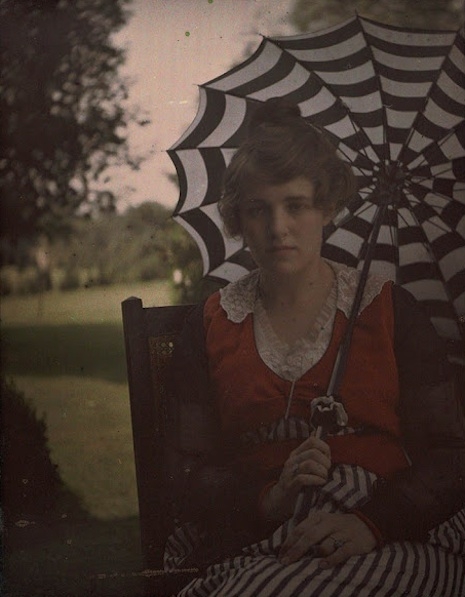
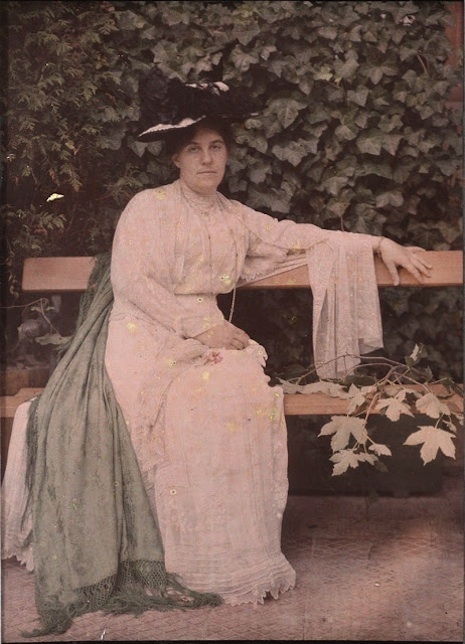
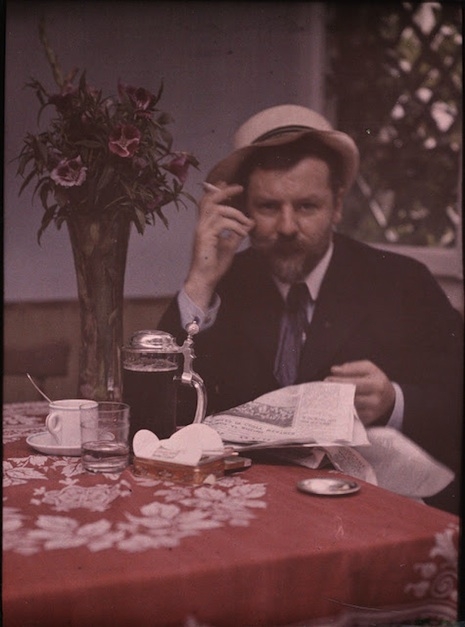
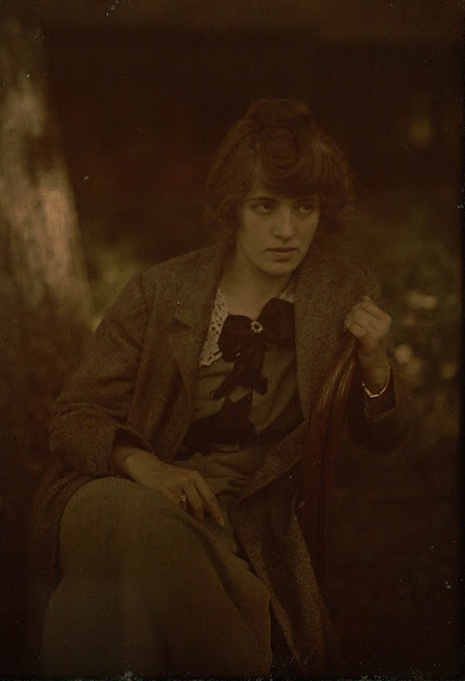
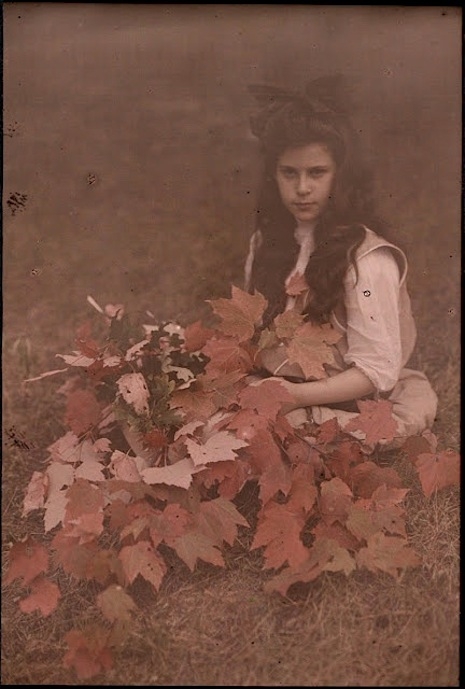
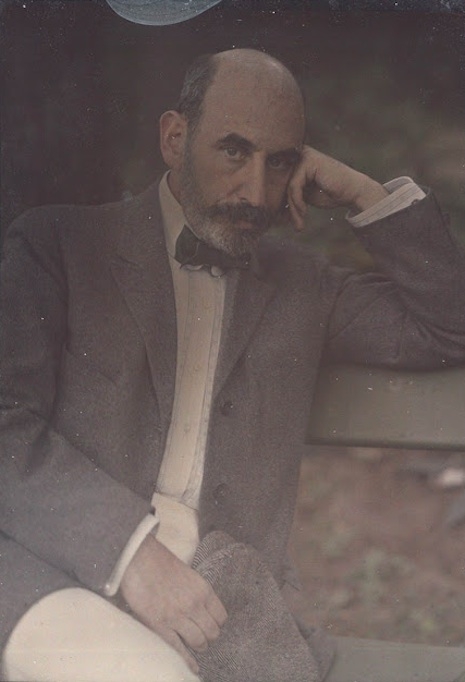
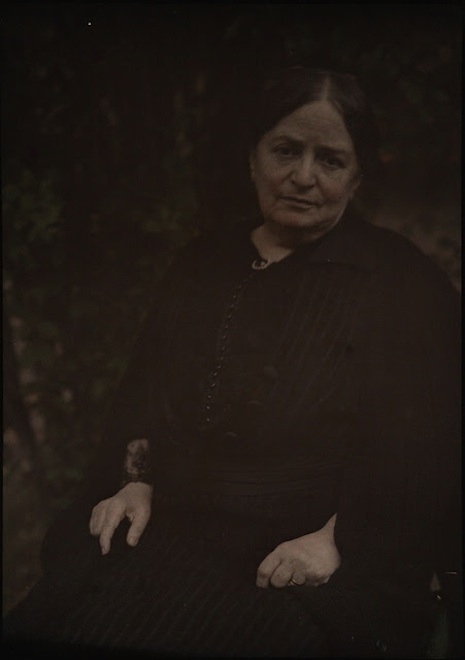


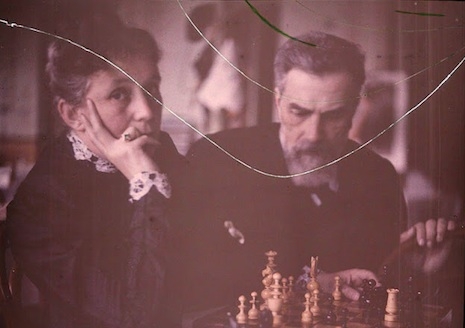
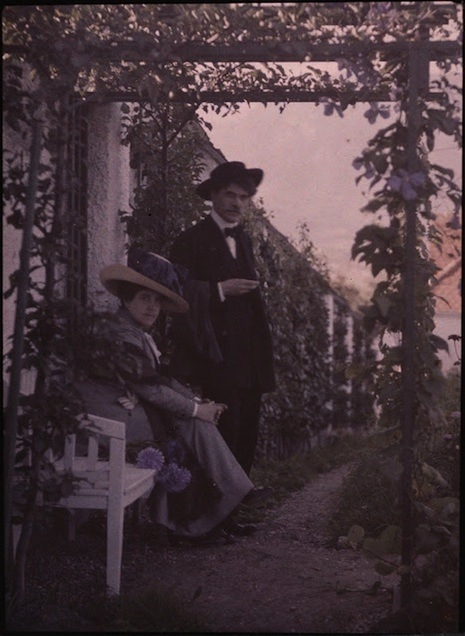
Stieglitz and his wife Emmy, circa 1915.
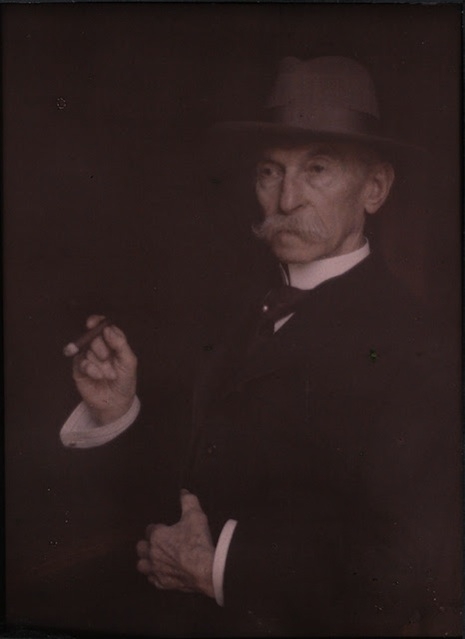
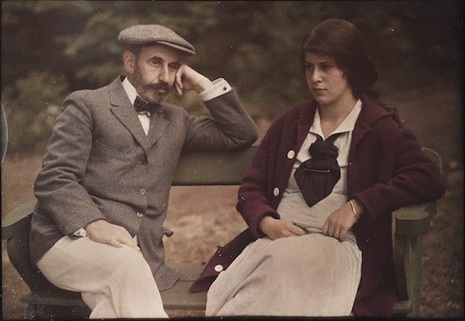
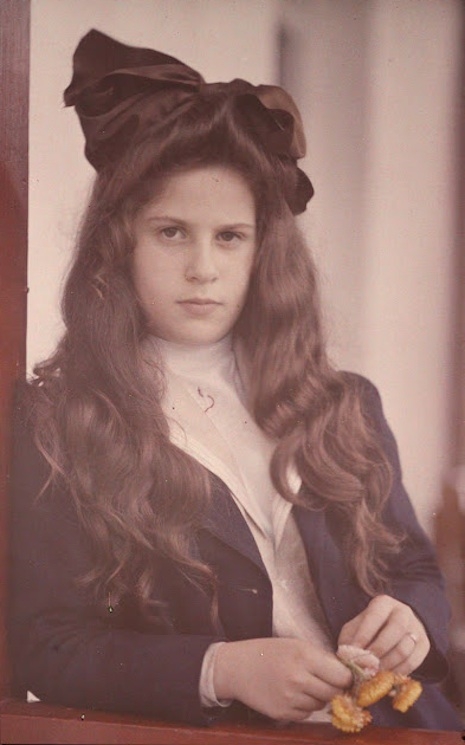
Via Vintage Everyday